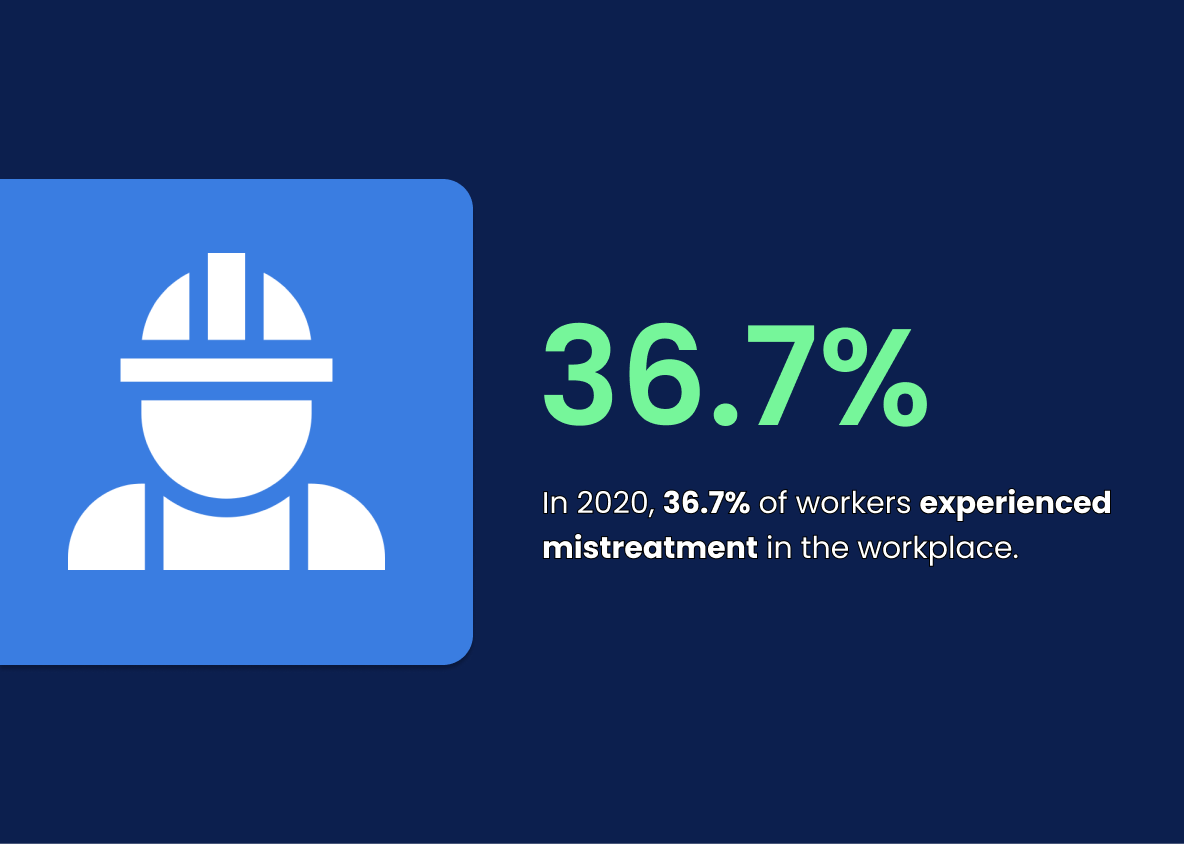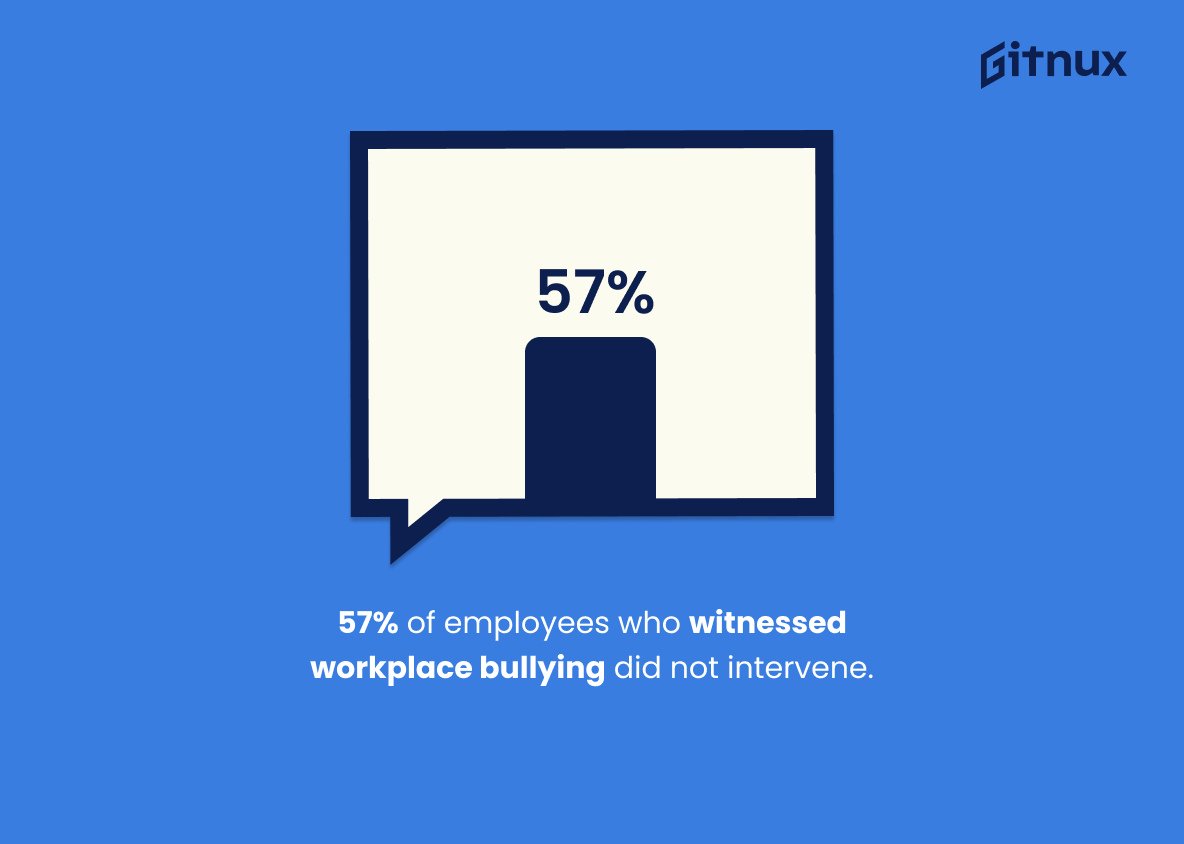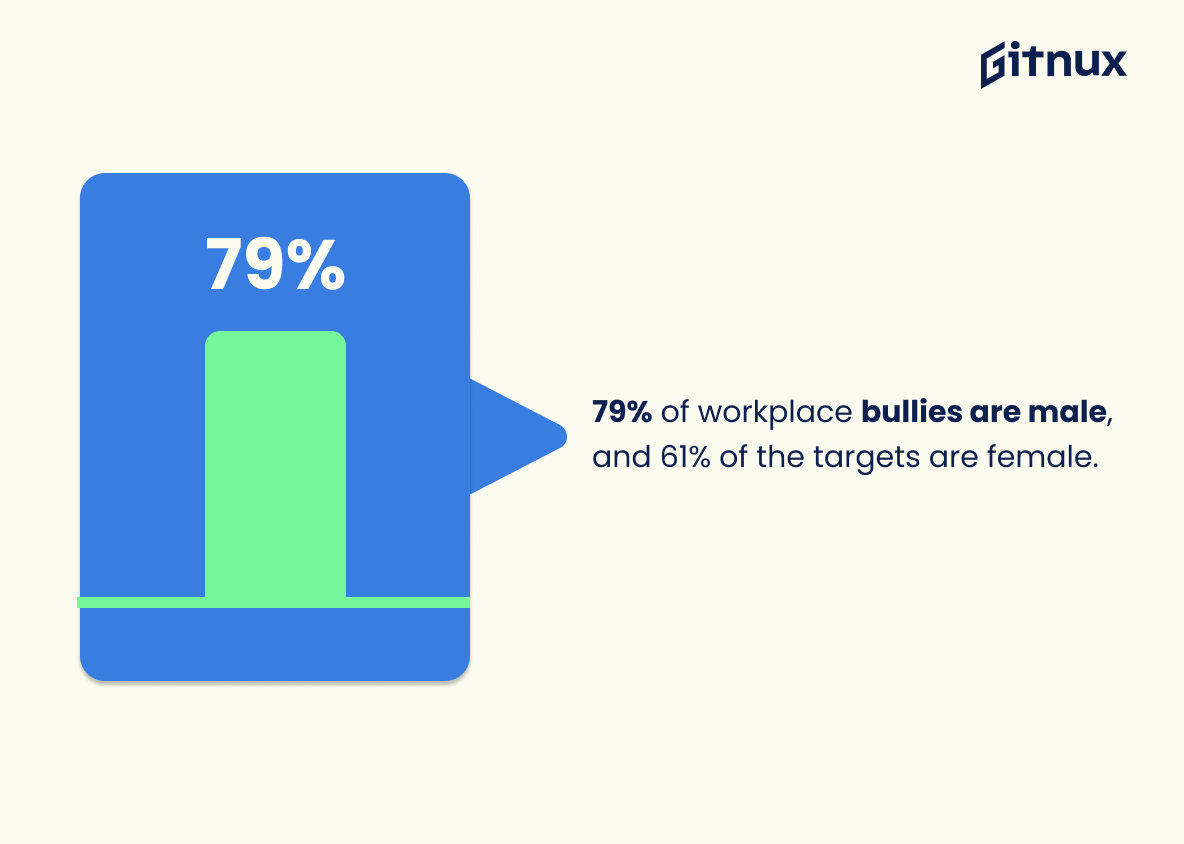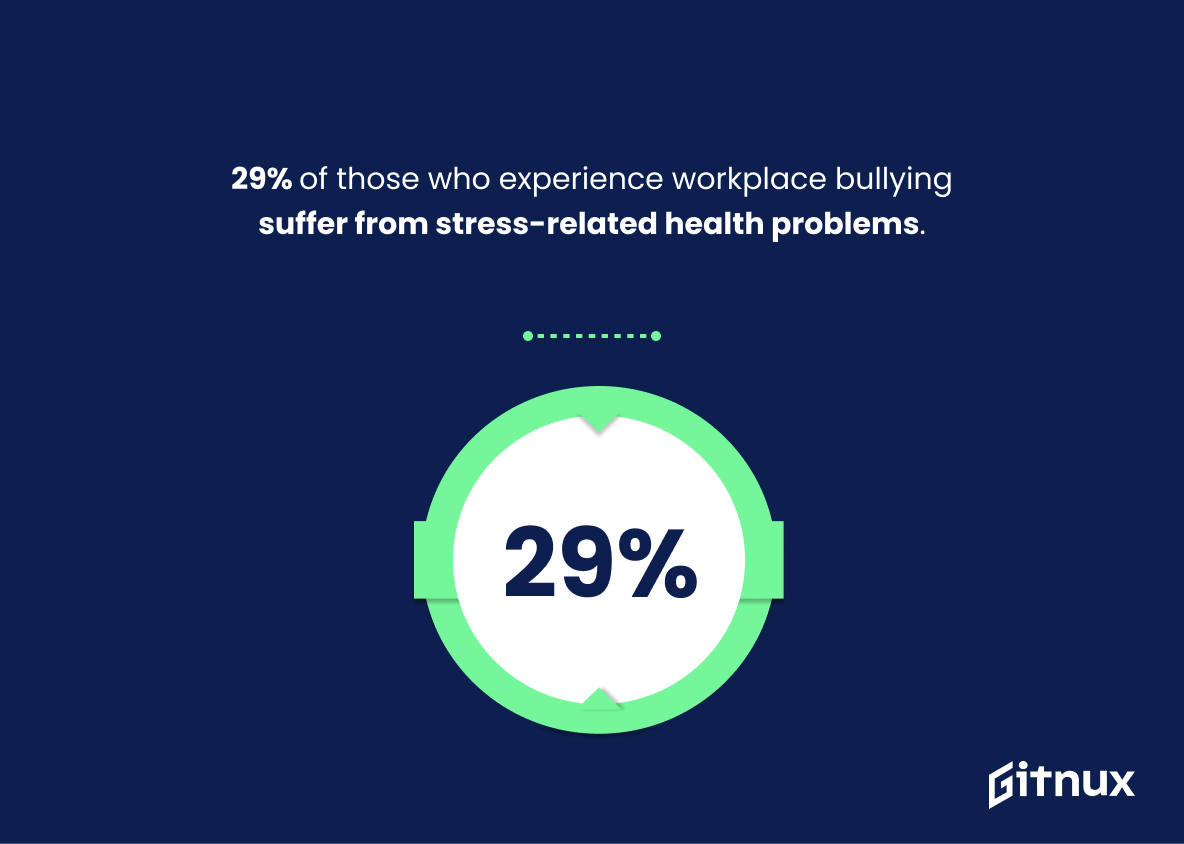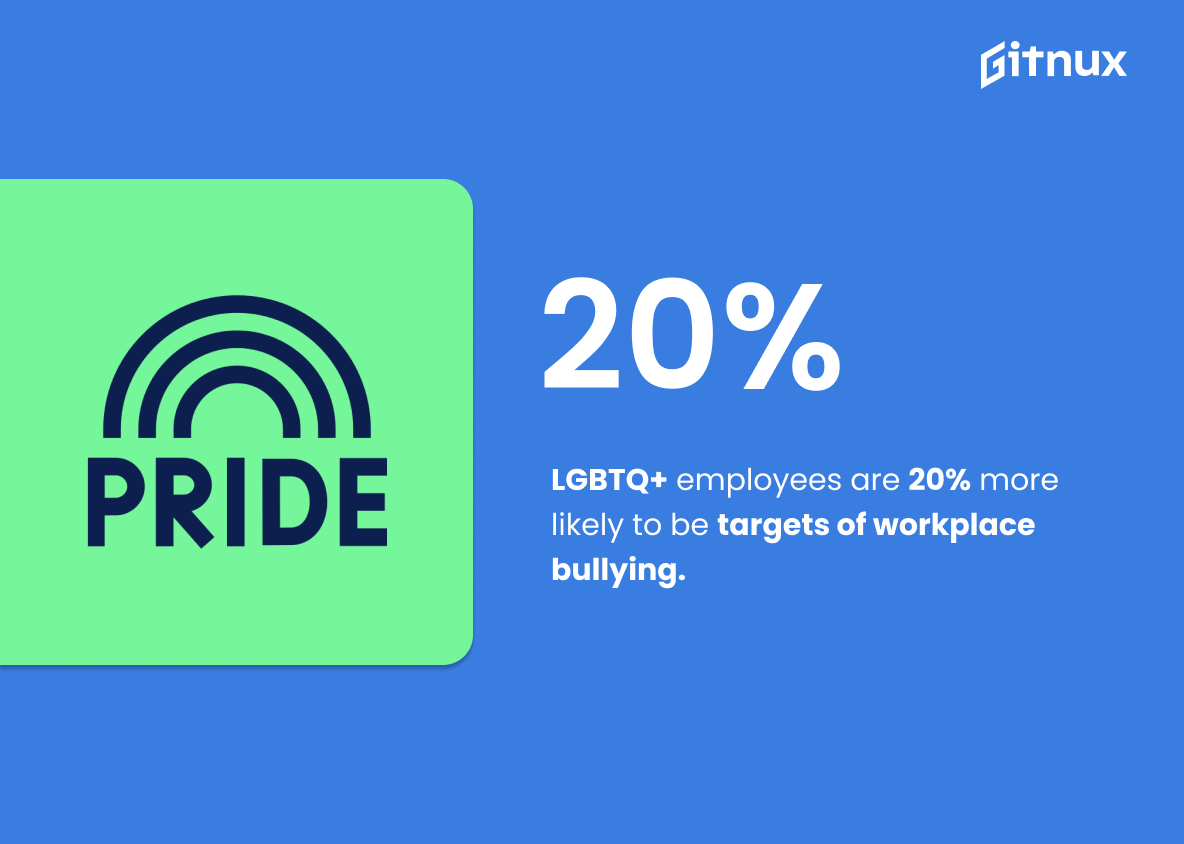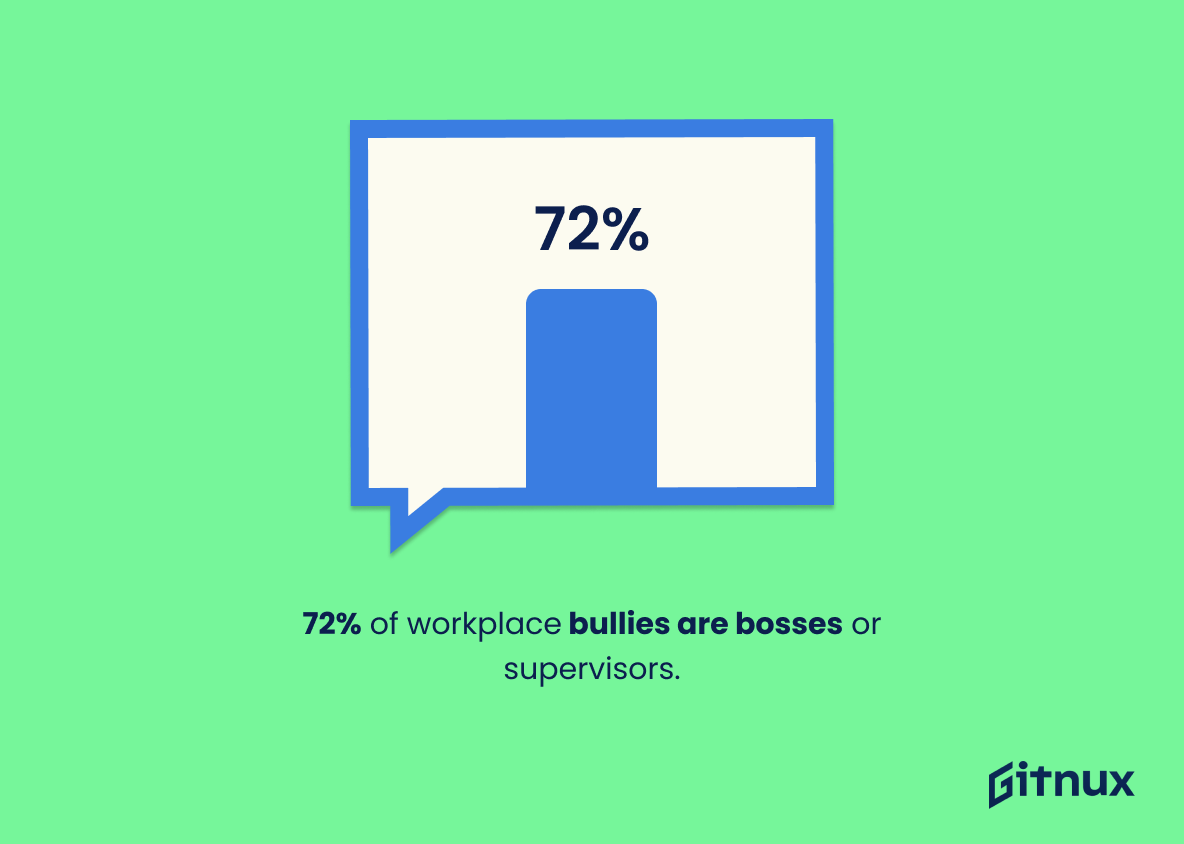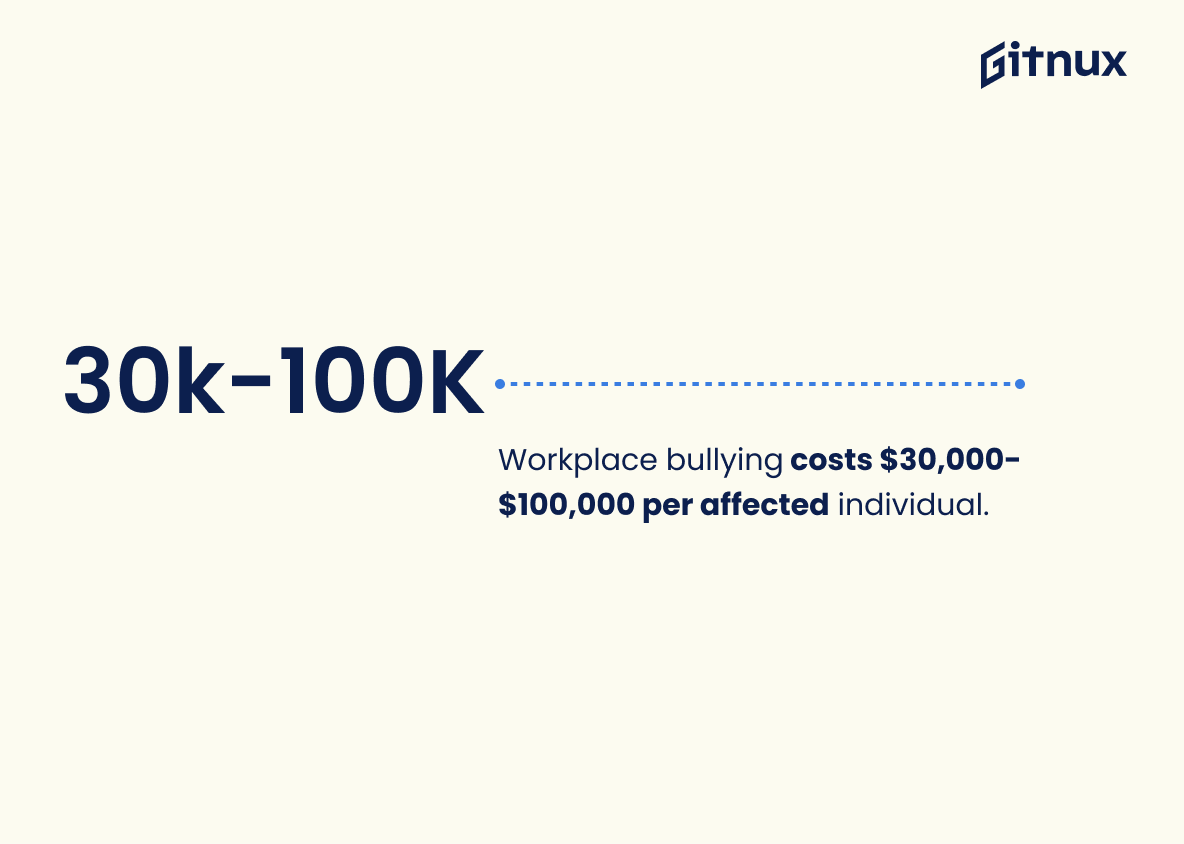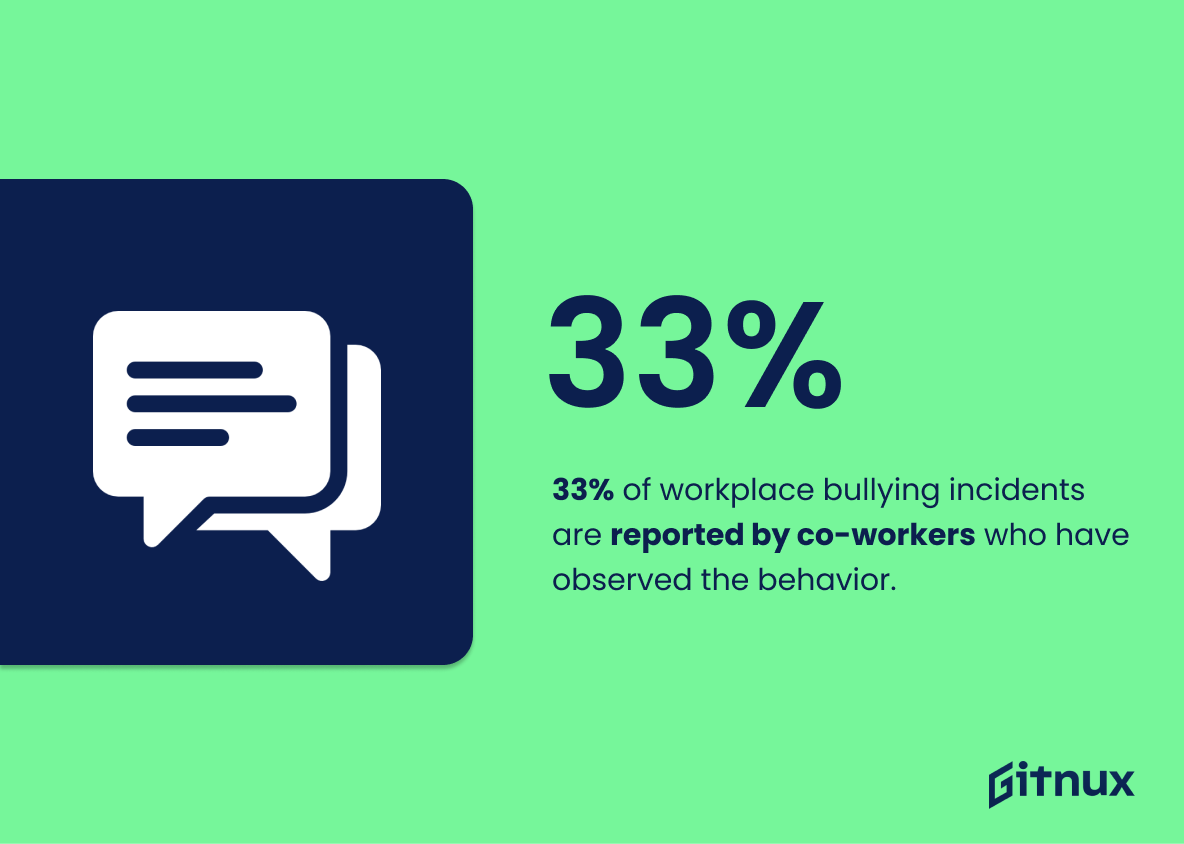Workplace bullying is a serious issue that affects millions of employees in the United States and around the world. According to recent statistics, 75% of employees have been affected by workplace bullying either as a target or witness. Approximately 19.7% of adults in the U.S., for example, experience workplace bullying on some level while 70% of bullies are higher-ups such as managers or supervisors. Furthermore, 61% of workplace bullies target their victims based on race, gender, disability or other protected characteristics and 36.7 % experienced mistreatment at work in 2020 alone.
These numbers only scratch the surface when it comes to understanding how pervasive this problem has become – 60 million Americans are affected by workplace bullying with 57 percent not intervening when they witness it happening; 71 percent left their jobs due to mistreatment; 43 percent nurses reported being bullied among healthcare professionals; 79 percent male perpetrators targeted female victims (61%); 40 percent cases go unreported and 15percent adult suicides can be linked back to this behavior. Moreover 29percent suffer from stress related health problems while LGBTQ+ workers were 20percent more likely than others to face discrimination at work – 72percent bosses/supervisors were found guilty here too. Not just that but businesses also pay an estimated $30k-$100k per individual who experiences harassment which results into 12-34 increase in employee turnover rate along with 50 percentage feeling isolated & socially distressed plus 81 percentage facing political biasness respectively . All these facts point towards one thing: we need better policies against Workplace Bullying now more than ever before
Workplace Bullying Statistics Overview
In 2020, 36.7% of workers experienced mistreatment in the workplace.
This statistic is a stark reminder of the prevalence of mistreatment in the workplace. It highlights the need for employers to take a proactive stance in addressing workplace bullying and creating a safe and respectful work environment for all employees.
60.4 million Americans are affected by workplace bullying.
This statistic is a stark reminder of the prevalence of workplace bullying in the United States. It highlights the fact that millions of Americans are being subjected to this form of abuse, and that it is a serious problem that needs to be addressed. It also serves as a call to action for employers to take steps to prevent and address workplace bullying in their organizations.
57% of employees who witnessed workplace bullying did not intervene.
This statistic is a stark reminder of the prevalence of workplace bullying and the need for intervention. It highlights the fact that, despite the majority of employees witnessing bullying, many are not taking action to stop it. This statistic serves as a call to action, urging employees to take a stand against workplace bullying and create a safe and respectful work environment.
Nurses experienced the highest rates of workplace bullying among healthcare professionals, at 43%.
This statistic is a stark reminder that nurses, who are often the backbone of healthcare systems, are disproportionately affected by workplace bullying. It is a call to action to ensure that nurses are provided with the necessary support and resources to protect them from such mistreatment.
79% of workplace bullies are male, and 61% of the targets are female.
This statistic is a stark reminder of the gender imbalance in workplace bullying. It highlights the fact that women are disproportionately targeted by male bullies, and that this is an issue that needs to be addressed. It also serves as a warning to employers that they need to be aware of the potential for male-on-female bullying in the workplace and take steps to prevent it.
29% of those who experience workplace bullying suffer from stress-related health problems.
This statistic is a stark reminder of the serious consequences of workplace bullying. It highlights the fact that bullying can have a devastating impact on the mental and physical health of those affected, with 29% of victims suffering from stress-related health problems. This is a powerful reminder that workplace bullying should not be taken lightly and that employers should take steps to prevent it.
LGBTQ+ employees are 20% more likely to be targets of workplace bullying.
This statistic is a stark reminder of the discrimination and mistreatment that LGBTQ+ employees face in the workplace. It highlights the need for employers to take proactive steps to ensure that all employees are treated with respect and dignity, regardless of their sexual orientation or gender identity. It also serves as a reminder that workplace bullying is a serious issue that needs to be addressed in order to create a safe and inclusive work environment for everyone.
72% of workplace bullies are bosses or supervisors.
This statistic is a stark reminder that workplace bullying is not only perpetrated by peers, but also by those in positions of authority. It highlights the need for employers to take a proactive stance in preventing and addressing bullying, as it can come from any level of the organization.
Workplace bullying costs businesses an estimated $30,000-$100,000 per individual affected.
This statistic serves as a stark reminder of the financial burden that workplace bullying can impose on businesses. It highlights the fact that the costs associated with bullying can be significant, ranging from $30,000 to $100,000 per individual affected. This serves as a powerful incentive for businesses to take steps to prevent and address workplace bullying.
Workplace bullying results in a 12-34% increase in employee turnover.
This statistic is a stark reminder of the devastating effects of workplace bullying. It highlights the fact that not only does bullying have a negative impact on employee morale, but it can also lead to a significant increase in employee turnover. This can be costly for businesses, as it can lead to a loss of productivity, increased recruitment costs, and a decrease in overall efficiency.
In a survey of U.S. workers, 81% reported that they had experienced or witnessed bullying due to political views.
This statistic is a stark reminder of the prevalence of workplace bullying due to political views. It highlights the need for employers to take a proactive stance in addressing this issue and creating a safe and respectful work environment for all employees. It also serves as a warning to employees to be mindful of their political views in the workplace and to be aware of the potential for bullying.
33% of workplace bullying incidents are reported by co-workers who have observed the behavior.
This statistic is a powerful reminder of the importance of having a workplace culture that encourages employees to speak up when they witness bullying. It shows that when employees feel safe to report bullying, it can be addressed and stopped. This statistic also highlights the need for employers to create an environment where employees feel comfortable to report any incidents of bullying they observe. By doing so, employers can ensure that their workplace is free from bullying and create a safe and productive environment for all employees.
Conclusion
The statistics presented in this blog post demonstrate the prevalence of workplace bullying and its far-reaching effects. 75% of employees have been affected by workplace bullying, either as a target or witness, while 19.7% of adults in the U.S. experience it directly. 70% of bullies are higher up than their targets, such as managers or supervisors; 61% target based on race, gender, disability or other protected characteristics; 36.7 % experienced mistreatment at work in 2020; 60 million Americans were affected by workplace bullying that same year; 57 % did not intervene when witnessing an incident and 71 % left their jobs due to mistreatment from others at work – with nurses experiencing 43%. 79% of perpetrators are male and 61%, female victims – LGBTQ+ workers being 20 percent more likely to be targeted – 72 percent bosses/supervisors involved overall with 40 percent cases going unreported leading to 15 percent adult suicides linked back to it plus 29 per cent suffering stress related health problems costing businesses between $30K-$100K each time someone is impacted along with 50 per cent feeling isolated socially resulting in 12-34 increase employee turnover rate which 81 reported having witnessed political views used against them 33 reporting incidents observed by co-workers .
It is clear that there needs to be greater awareness about the issue so employers can take steps towards preventing these occurrences within their organizations before they become too serious for any one person handle alone
References
0. – https://www.oxford-review.com
1. – https://www.pubmed.ncbi.nlm.nih.gov
2. – https://www.forbes.com
3. – https://www.dri.org
4. – https://www.ilo.org
5. – https://www.ncbi.nlm.nih.gov
6. – https://www.workplacebullying.org
7. – https://www.rallypoint.com
8. – https://www.time.com
9. – https://www.link.springer.com
10. – https://www.fortune.com
ZipDo, cited June 2023: Workplace Bullying Statistics
